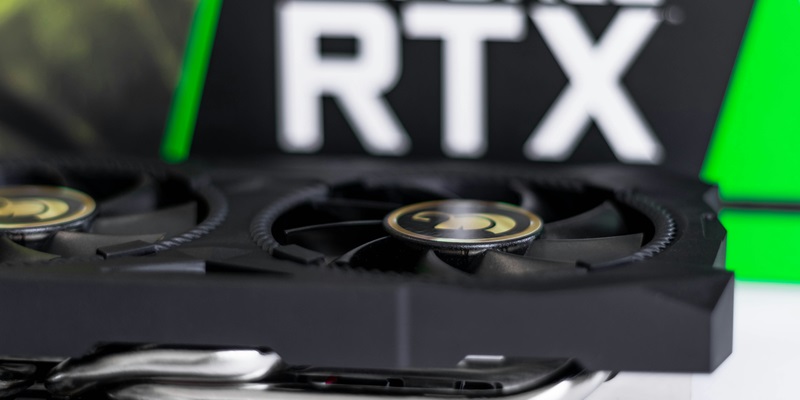Mobile computing is evolving dramatically, as evidenced by Nvidia’s recent announcement of its RTX 500 and 1000 series GPUs based on the Ada architecture. These advanced laptop GPUs mark a significant milestone, illustrating an industry-wide push toward greater AI capabilities and enhanced graphics performance in portable devices. The significance of this shift was highlighted at the Mobile World Congress in Barcelona, reflecting a broader industry trend. The new Ada Generation GPUs are designed to meet the demands of users who require desktop-level performance on-the-go. Whether for gaming, professional graphics work, or AI-driven applications, the RTX 500 and 1000 series promise to deliver unprecedented power and efficiency. This innovation responds to consumers’ increasing desire for high-performing, versatile mobile devices that don’t compromise on power. As technology continues to move toward more mobile and flexible solutions, Nvidia’s launch represents a pivotal moment in this ongoing transformation, signaling a future where the boundaries between desktop and laptop performance continue to blur.
A New Standard in Mobile AI and Graphics Performance
The Revolutionary RTX 500 GPU
Nvidia’s newest RTX 500 series GPU marks a revolutionary leap in mobile computing power. With this advancement, AI processing has been supercharged, showcasing a remarkable 14-fold enhancement over previous models. This leap is particularly significant for digital creatives, who will benefit from AI-driven photo editing speeds that are now three times faster. Moreover, the GPU’s contribution to 3D rendering is substantial; it boosts graphics performance by a factor of ten compared to machines running solely on CPUs. Such a dramatic increase in efficiency ensures that tasks which traditionally took hours can now be completed in a fraction of the time. This game-changing performance from Nvidia’s RTX 500 series ushers in an era where professionals can expect unprecedented workflow transformations, ultimately redefining the bounds of mobile computing. With these GPUs, Nvidia isn’t just keeping pace with the demands of modern technology but is actively pushing the boundaries of what’s possible.
Advanced Features Across the Ada Generation
The Ada Generation GPU series spans across a broad spectrum, including the RTX 2000, 3000, 3500, 4000, and 5000 models, tailored to meet diverse professional demands. Additionally, the RTX 1000 is optimized for ultra-portable laptops, offering notable enhancements. These GPUs feature upgraded RT and Tensor Cores, plus an increased count of CUDA cores, all contributing to a powerful processing capability ideal for high-end tasks. With a bump in GPU memory and the integration of cutting-edge technologies like DLSS 3 and an AV1 encoder, these graphics cards guarantee outstanding performance. Users benefit from a blend of high efficiency and mobility, enabling them to tackle intensive applications without the weight of traditional GPUs. The Ada lineup is setting new standards for performance across various platforms, redefining what is possible in the realm of portable computing.
Broader Impact on Flexible and Powerful Computing Solutions
Neural Processing Unit Integration
The fusion of a Neural Processing Unit (NPU) into Nvidia’s RTX GPUs heralds a new era for the computing industry. These cutting-edge GPUs are not just for traditional graphics tasks—they now excel in complex AI operations, delivering a staggering 682 TOPS of AI performance. This innovation transforms the workflow for those in creative professions, including content creators, video editors, and graphic designers, by offering a remarkable increase in efficiency and the ability to explore new creative horizons. The integration of the NPU propels portable devices into a realm of greater intelligence and autonomy, providing the ability to perform tasks with a speed and sophistication that was once out of reach. This technological advancement signifies a pivotal shift as devices evolve to become more intelligent and independent in handling tasks.
Embracing the Hybrid Work Era
Nvidia’s latest Ada Generation GPUs, tailored for the burgeoning hybrid work scenario, offer a mix of flexibility and robust power, just in time to ride the wave of generative AI. These GPUs come equipped with NPUs to better handle AI tasks, manifesting the tech’s infusion into everyday computing. With a launch window set for spring, major tech players like Dell, HP, Lenovo, and MSI are slated to roll out mobile workstations with these cutting-edge GPUs. This move heralds a new era in which portable machines don’t just respond to current tech trends but are future-ready. As AI’s role in daily computing tasks grows, hardware with the capacity to evolve becomes imperative, and Nvidia’s new offerings aim to fill this gap, transforming the landscape of mobile AI and graphic capabilities for professionals across various fields.

